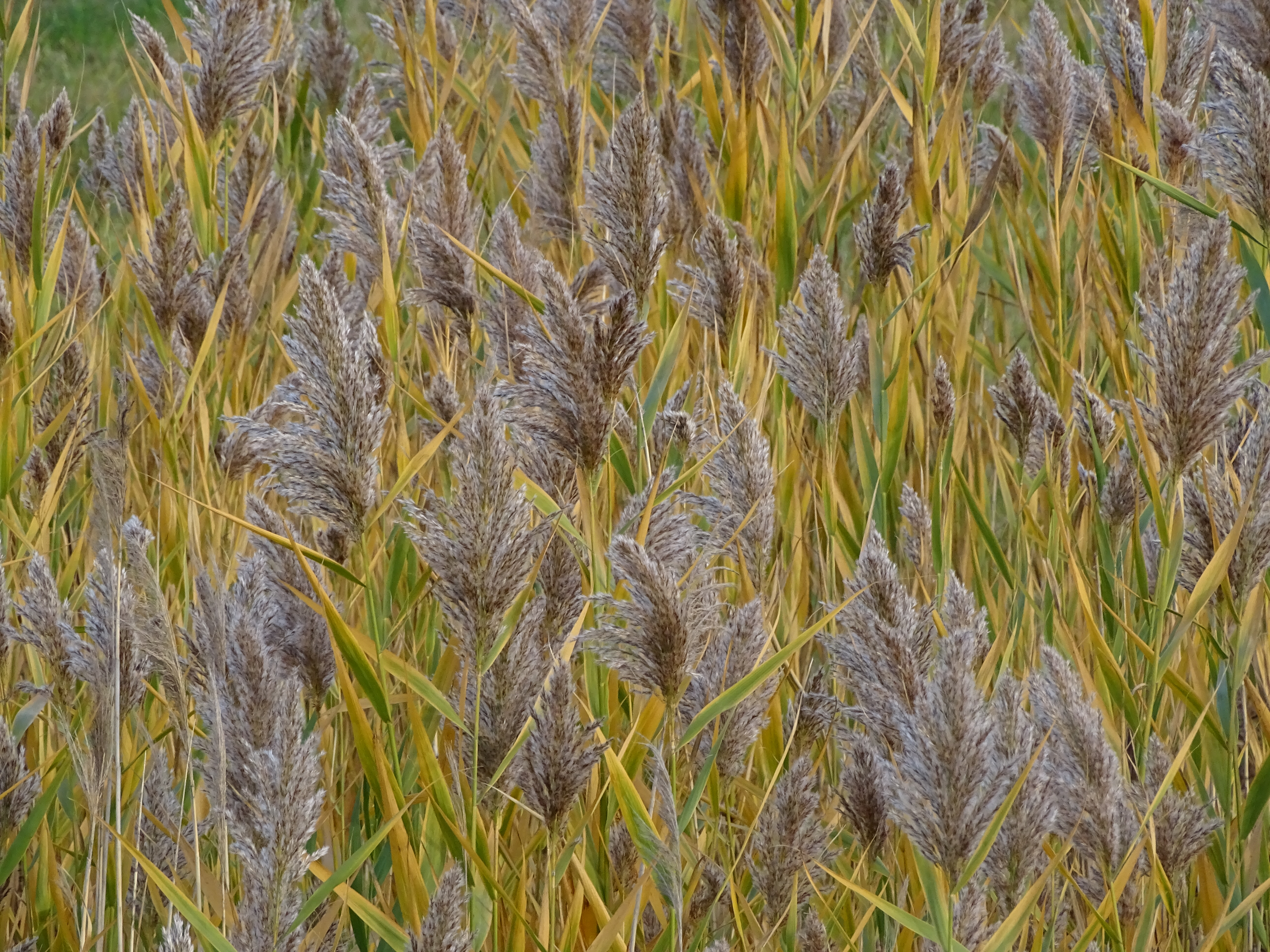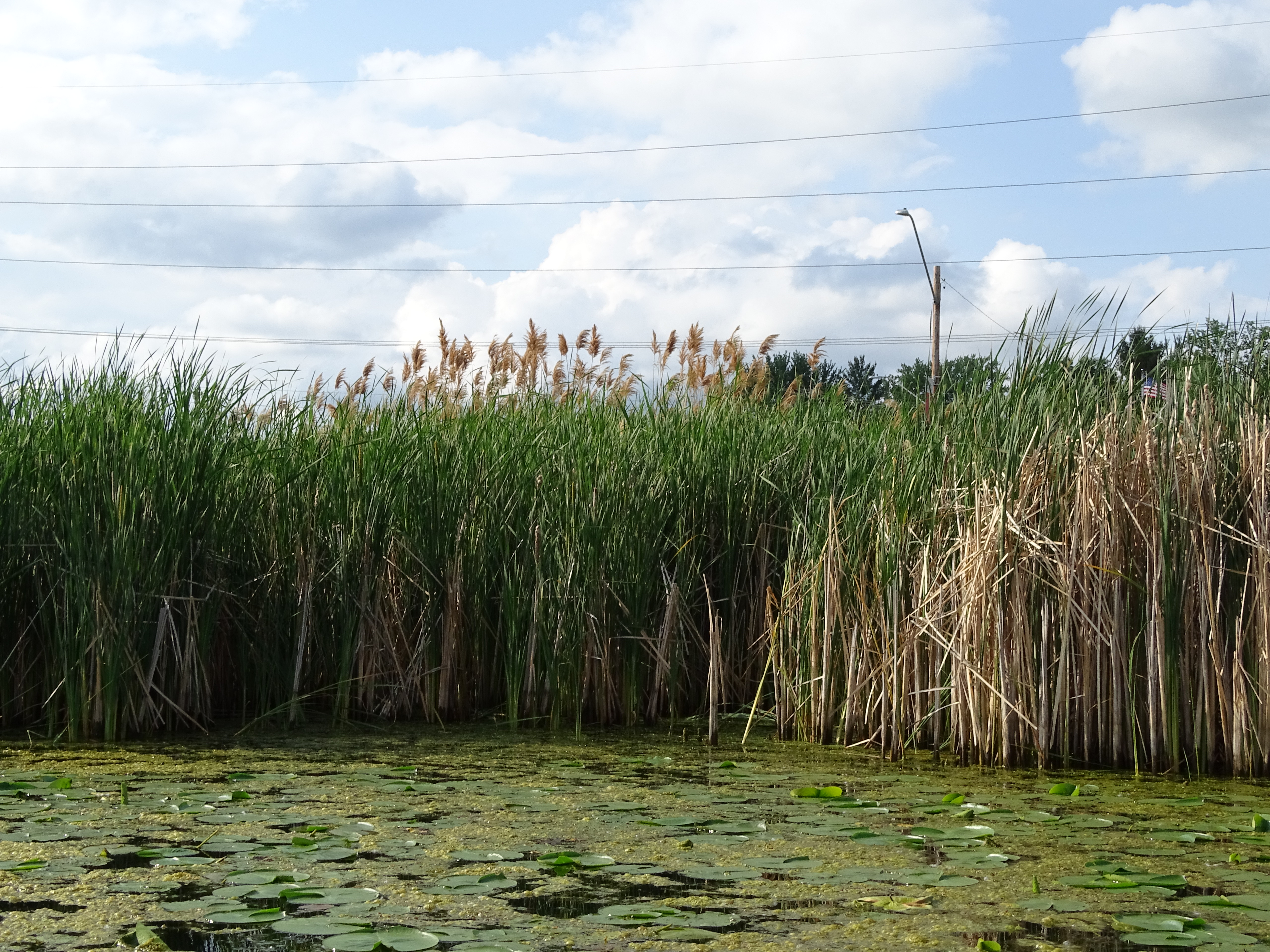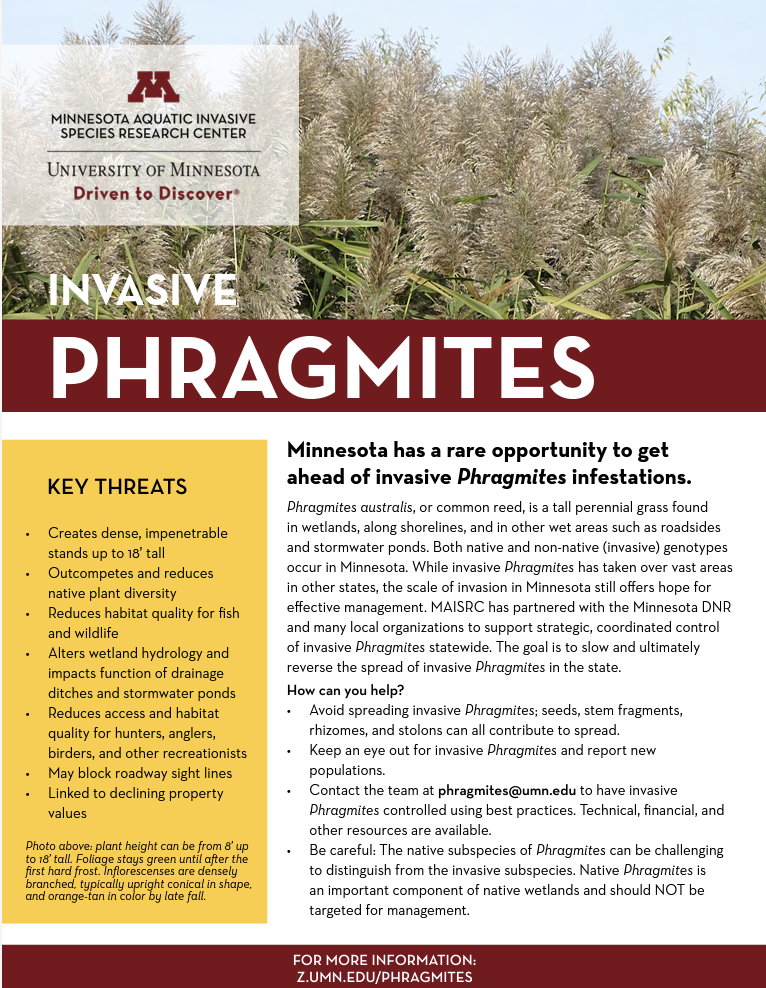Phragmites australis subsp. australis
Invasive Phragmites (Phragmites australis subsp. australis) is an aggressive non-native grass that can harm wildlife, recreation, and ecological functioning. While it has taken over vast areas in other states, the scale of invasion in Minnesota still offers hope for effective management.
Minnesota has a window of opportunity to prevent invasive Phragmites from transforming Minnesota’s lakeshores, wetlands, riparian areas, and other habitats.
MAISRC has partnered with the Minnesota DNR and many local organizations to support strategic, coordinated control of invasive Phragmites statewide. Our goal is to slow and ultimately reverse the spread of invasive Phragmites in the state.
Natural resources professionals, roadside maintenance crews, and concerned individuals can help:
- Avoid spreading invasive Phragmites; stems, rhizomes, stolons, and seeds can all contribute to spread.
- Keep an eye out for invasive Phragmites and report new populations.
- Contact our team at [email protected] to have invasive Phragmites controlled using best practices. Technical, financial, and other resources are available.
- Be careful: There is a native subspecies of Phragmites that can be challenging to distinguish from the invasive subspecies. Native Phragmites is an important component of our wetlands and shorelines that should NOT be targeted for management.
If resource managers do not act strategically, spread of invasive Phragmites will outpace control capacity, and we will have missed a critical opportunity to protect Minnesota habitats and infrastructure. As of January 2023, 1670 invasive Phragmites populations have been verified. Although that number is large, the extent of invasive Phragmites is still relatively small, encompassing approximately 200 acres. We continue to rely on a network of professionals and volunteers to document new populations of invasive Phragmites.
 |
 |

